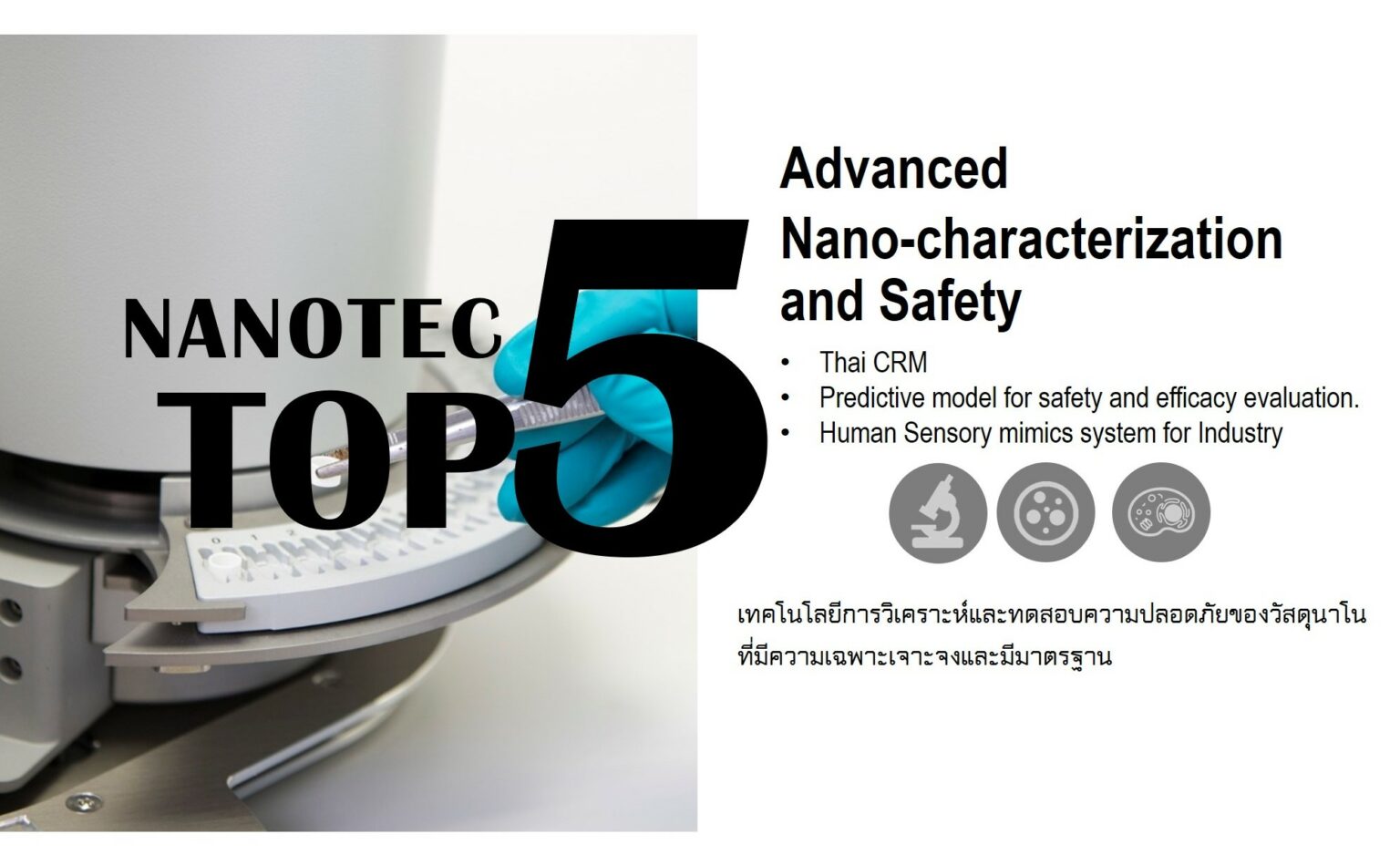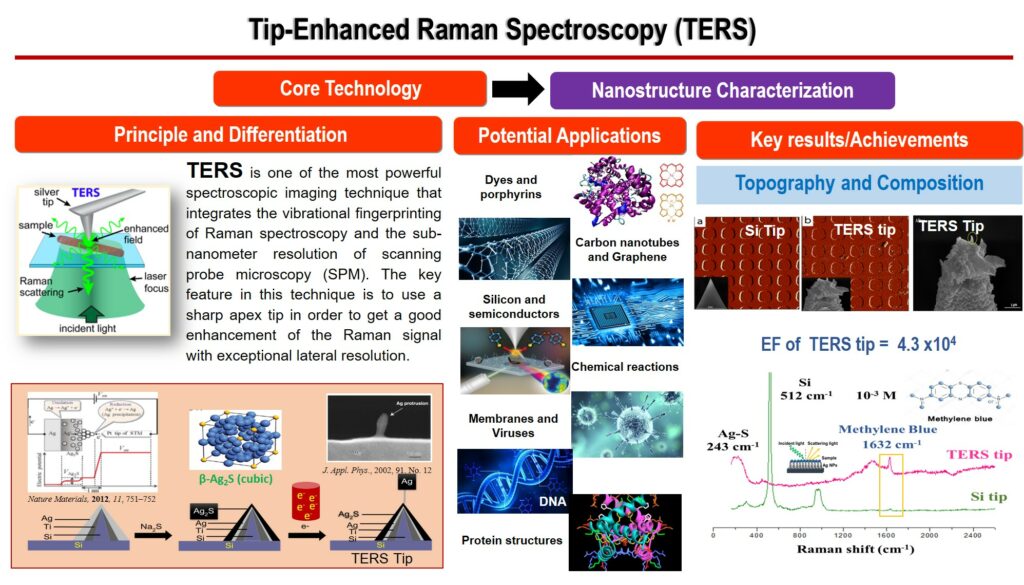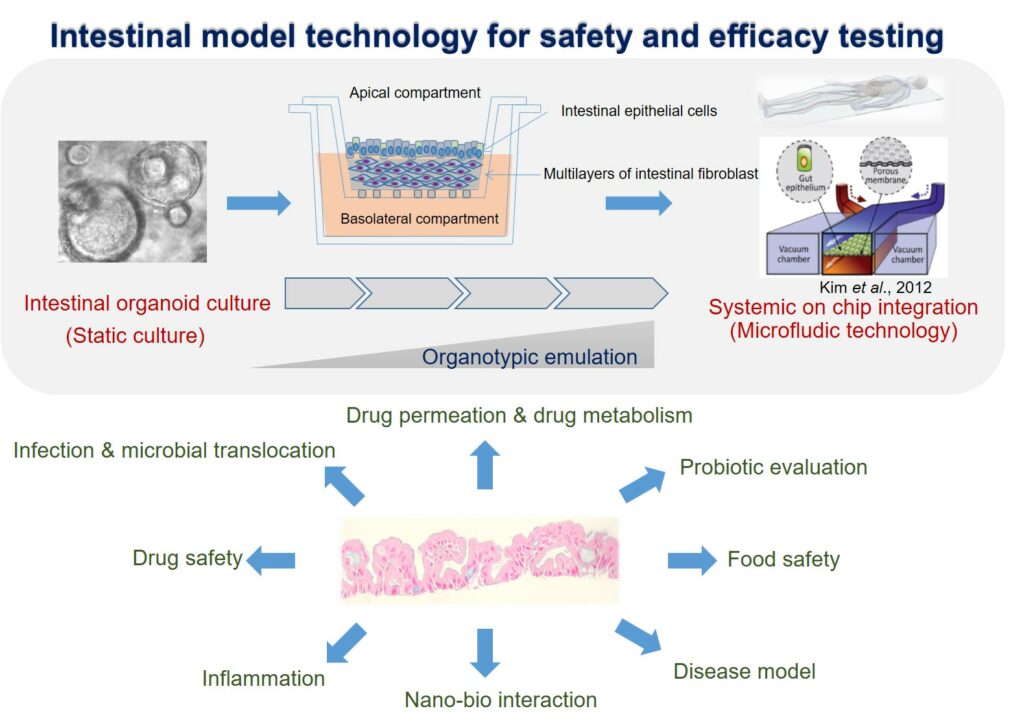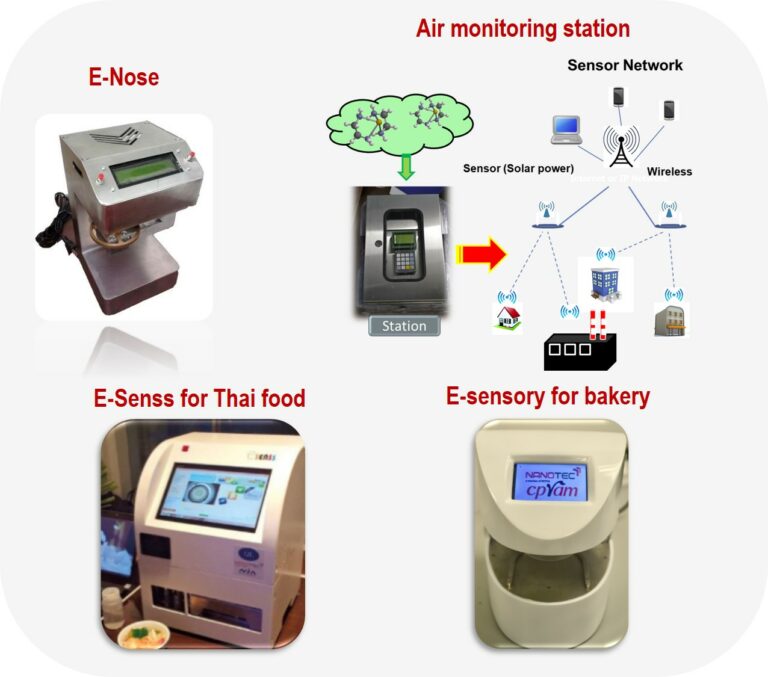ABOUT US
Advanced Nano-characterization and Safety research group (ANCS) conducts research and development in the field of nanometrology, nanocharacterization including study of nanoproduct properties, as well as environmental and health safety of nanostructured materials. We provide innovative solutions through the convergence thinking based on theories, applied physics, system engineering, process designs and prototyping challenges to serve the industrial requirement and their problem solving. We also do collaborative research and development projects with industrial sectors by using biological, computational models and advanced nanotechnology instruments.
The nanotechnology standards have also been developed. We are currently working on developing industrial standards for nanoparticles and other products developed based on nanotechnology.
SELECTED PUBLICATIONS
(1) Muensri, A. Treetong, K. Namdee, P. Kasamechonchung, T. Wutikhun, J. Sumranjit, V. Yordsri, B. Chayasombat, M. Horprathum, S. Porntheeraphat, N. Khemasiri, S. Rahong and A. Klamchuen, ZnO Nanorods Grown on Heterogenous Ag Seed Layers for Single-Cell Fluorescence Bioassays, ACS Applied Nano Materials, 2021, 4, 7384-7394.
(1) Pinming, W. Wongwiriyapan, S. Rattanamai, N. Ketama, A. Treetong, T. Ikuno, G. Tumcharern and A. Klamchuen, Carbon nanotube/polydimethylsiloxane composite micropillar arrays using non-lithographic silicon nanowires as a template for performance enhancement of triboelectric nanogenerators, Nanotechnology, 2020, 32, 095303.
(3) Rungkamoltip, S. Temisak, K. Piboonprai, D. Japrung, P. Thangsunan, S. Chanpanitkitchot, W. Chaowawanit, N. Chandeying, S. Tangjitgamol and T. Iempridee, Rapid and ultrasensitive detection of circulating human papillomavirus E7 cell-free DNA as a cervical cancer biomarker, Experimental Biology and Medicine, 2020, 246, 654-666.
(4) Kitipaspallop, S. Sillapaprayoon, P. Taepavarapruk, C. Chanchao and W. Pimtong, Evaluation of developmental and transcriptional effects of α-mangostin on zebrafish embryos, Toxicological & Environmental Chemistry, 2021, 103, 254-268.
OUR RESEARCH TEAM
KEY RESEARCH
1. Tip-Enhanced Raman Spectroscopy (TERS) 2. Development of 3D intestinal model using bioprinting technology
TERS is one of the most powerful spectroscopic imaging technique that integrates the vibrational fingerprinting of Raman spectroscopy and the sub-nanometer resolution of scanning probe microscopy (SPM). The key feature in this technique is to use a sharp apex tip in order to get a good enhancement of the Raman signal with exceptional lateral resolution.
2. Development of 3D intestinal model using bioprinting
This research aims to develop the lamina propria multilayer of intestinal tissue by bioprinting. The project focuses on using Thai natural compounds for the induction of extracellular matrix formation and self-assembly of the intestinal myofibroblast. We expect our 3D intestinal tissue to imitate the genuine human tissue both physically and functionally to be applied in the safety and efficacy testing for industrial.
3. E-sensory for quality evaluation
Physical and chemical sensing devices include artificial intelligence (AI) for identification and quality evaluation in several industrial.



